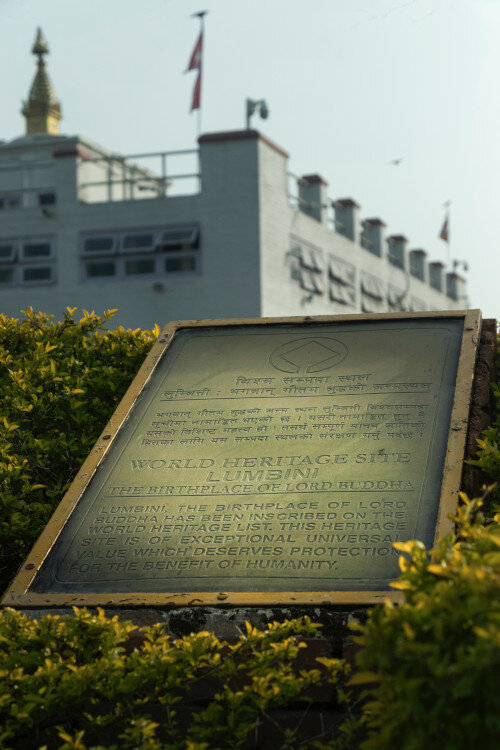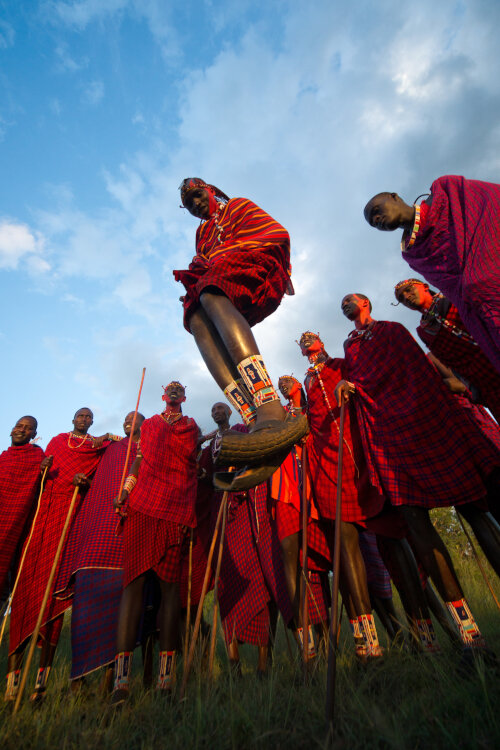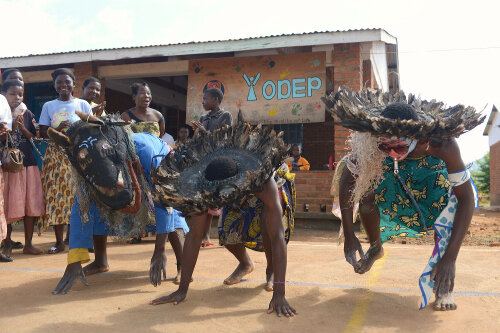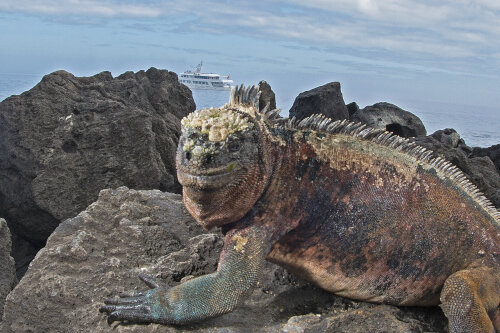World Heritage & Tourism
/Raising awareness of the importance of diversity of tangible and intangible heritages should be an everyday practice, although the 18th of April is entirely dedicated to World Heritage Day. Let’s take a look at what it means.
What is Heritage?
Heritage is something that comes or belongs to one by reason of birth and can refer to practices that are passed down through the years.
A World Heritage Site is a cultural or natural landmark that has been recognized by the United Nations Educational, Scientific and Cultural Organization (UNESCO). They are deemed worthy of preservation due to their universal value to humanity, in the present and for future generations.
World Heritage Day
This reminds us to consciously remember the importance of protecting human heritage, its diversity, and vulnerability alongside the effort required to preserve and conserve it.
In 1982, the International Council on Monuments and Sites (ICOMOS) named 18th of April as World Heritage Day, and one year later, in 1983, the General Assembly of UNESCO approved the notion. The day aims to enhance awareness about the importance of cultural heritage, monuments, and the need to conserve all of them.
Indeed, we can all learn more on how important ancient buildings and monuments are for us and the world, and it helps to make people think about their susceptibility and conservation.
However, besides monuments and ancient sites, there is a lot more that we call heritage. Let’s see what else qualifies and how we distinguish between them!
What kinds of heritages are there?
The UNESCO distinguishes between two types of World Heritage sites: Cultural Heritage, which includes historic buildings, monuments, and Natural Heritage: which includes mountains, rivers, and any other landscapes.
But besides the acknowledged World Heritage Sites, every day people celebrate their heritage by simply living their lives in a way that epitomizes who they are and where they came from.
“Cultural heritage is the legacy of physical artifacts and intangible attributes of a group or society that are inherited from past generations, maintained in the present and bestowed for the benefit of future generations.” – UNESCO
We can distinguish three main types of heritage: cultural property, intangible culture, and natural heritage:
1. Cultural Property
Cultural property or material culture has a tangible presence. It includes buildings, monuments, historic places, and artifacts, etc. These are considered worthy of preservation for the future and can be objects of significance from a scientific, archaeological, architectural, or specific cultural point of view.
They are either moveable (books, documents, artworks, machines, etc) or unmovable (monuments, buildings, frescos, etc.), but both equally crucial.
Objects are important for humans, both because they provide physical evidence of past ideas, and because therefore they validate them too. As we think it is important to recognize the past, these artifacts and historical sites can tell many important stories.
Clothing is an example of cultural property. For example, here in Kenya, The Maasai tribe can be recognized by the red cloth their tall warriors wear, called Shuka. The colour red, and other primary colours used on the Shuka, represent different aspects of the Maasai culture. Red is believed to mean protection against wild animals, besides representing cow blood, that they drink mixed with cattle milk for extra nutrition.
2. Intangible Culture
Intangible heritage´s simplified explanation is a heritage that does not have a physical presence. This may be traditions inherited from our ancestors and passed through generations or social customs during a specific period of time.
These oral traditions, performing arts, social practices, rituals, festive events, knowledge and practices can relate to nature, the universe, or the knowledge and skills to produce traditional crafts.
Food and medicine are also both great examples of heritage, and last but not least most recently our digital heritage has started evolving.
Intangible heritages, like language for example, are extremely hard to preserve, if customs, oral traditions, and other inherited knowledge are no longer transmitted among native speakers. Younger generations should be encouraged to learn and teach their children as well, besides acquiring knowledge of English for example as the language of trade.
Traditional dances, either folk dance or sometimes ceremonial dances are a big part of a culture´s heritage. Its practice and preservation are frequently an important aspect for indigenous communities. For example, “Gule Wamakulu”, translated as “The Big Dance,” is the most famous of the traditional Malawian dances.
Naturally, intangible cultural heritage is a lot harder to preserve than tangible heritage and is greatly dependent on stories and folklore.
3. Natural Heritage
Natural heritage is crucial for a society´s heritage, as it embodies all natural environment, biodiversity (flora and fauna), as well as geological elements, like you can see here where our partner’s retreat and ranch is based in Croatia.
Besides being an important indicator of cultural evolution, such as farming and specific lifestyle indicator, natural heritage also often serves as an important element of the tourism industry of a country.
Raising awareness of the preservation and conservation of natural heritage is just as important as other heritage forms.
Disruption of Cultural Heritage
Historical events, such as wars, colonisation and natural catastrophes have all resulted in disruptions of physical evidence, practices and transmissions of tangible and intangible cultural heritages.
For example, tangible indigenous cultural heritage items have been collected and removed from their context and “country”, for many purposes. One of those being museum displays, often without reference to the location of origin or owner, due to the insufficient referencing systems.
Another issue over the years with indigenous people’s intangible cultural heritage was the fact that it proved to be “too difficult” to properly understand or record and appropriately represent in terms of its context, purpose, or the persons or places from where it first became known.
Having consent to utilise or document indigenous people´s cultural processes may be difficult; this much cultural significance is a sign of deep trust or respect. Often, the ownership of these cultural heritage processes is earned by individuals or groups of Indigenous people over a long period of time and may represent a person’s status and respect with which they are regarded within a family or community.
Fortunately, many preservation works are done on a national, regional, or local level of society, resulting in a more accurate and authentic representation of Indigenous people´s cultural heritage.
Unfortunately, climate change is also posing an ever-increasing threat to heritage sites in urban and rural natural contexts. Diverse and extreme weather patterns, such as increasing frequency of storms, floods, droughts and sea-level rise are becoming increasing assessed risks for sensitivity and vulnerability, with adaptations required for sustainable, resilient and safe environments.
For example, The Galapagos Islands was designated the first UNESCO World Heritage site (in 1978) but added to the List of World Heritage Sites in Danger 2007-2010, due to the fast pace of human development, trade, and its biodiversity attracting tourism in ever-increasing numbers, negatively impacting the fragile environment especially with the growing encroachment of invasive species, and fighting the rising tide of plastic pollution arriving is a growing threat.
World Heritage Sites
According to the 1972 Convention Concerning the Protection of the World Cultural and Natural Heritage, a site must possess ‘outstanding universal value’ to humanity. In 2020, 1,121 World Heritage Sites (869 cultural, 213 natural, and 39 mixed properties) existed across 167 countries.
To be selected, a World Heritage Site must be a somehow unique landmark which is geographically and historically identifiable and has special cultural or physical significance, and meet at least one of the ten Cultural and Natural criteria: diversity of human values; development of urban or settlement form; reference to history or living traditions; or superlative natural phenomena, exemplifying geological, biological and ecological processes; or in-situ preservation of biodiversity.
A World Heritage Site may thus signify a remarkable accomplishment of humanity, and serve as evidence of our intellectual history on the planet, or it might be a place of great natural beauty.
The vulnerability of sites to threats like raiding, erosion, and construction, coupled with international campaigns for their preservation, led to a convention to protect ‘common cultural heritage of humanity.’
Each UNESCO World Heritage Site is thus held in collective trust, legally protected by international treaty, and 'belonging to all the peoples of the world, irrespective of the territory on which they are located'.
However, World Heritage designation does not ensure a site’s safety; for example, all six UNESCO monuments in Syria were destroyed or damaged during civil war, including the 3rd century Palmyra Arch of Triumph and the Great Mosque of Aleppo. According to the United Nations, the destruction showed that ISIL was "terrified by history and culture."
What can you do to celebrate and contribute to heritage and World Heritage Day?
Perhaps, the easiest and most convenient way to start is by searching out the locations near you that qualify as World Heritage Sites. Besides learning about their historical significance, and paying them a visit, learn the necessary and important steps of preserving and protecting the site.
You can also take charge! If you have a place on your mind that you think should qualify as a World Heritage Site and be protected and preserved for future generations, consider putting it forward to ICOMOS (The International Council on Monuments and Sites) as a suggestion.
You can also utilize social media to find events near you that honour World Heritage Day. Lend your support with important causes and raise awareness of historically or architecturally important buildings and monuments.
During lockdowns due to the COVID pandemic, possibilities for visiting and supporting World Heritage Day with your actual presence at different sites may be limited. Don´t let that discourage you! You can participate by raising awareness with people you know! This is something you can do from the comfort of your home via social media. Post a message or picture that informs your friends and followers and urges them to learn more about their local (or international) heritage.
Have you had a chance to visit one or more sites before or planning on it? Post a picture and start the conversation! It is a great way to get people involved and raise awareness of heritage.





















